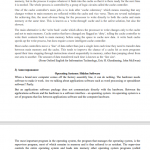Тема контрольной работы: Английский язык 3 вариант
или
Заказать новую работу(фрагменты работы)
| Учебное заведение: | ФГБОУ ВО «КУРГАНСКИЙ ГОСУДАРСТВЕННЫЙ УНИВЕРСИТЕТ». |
| Тип работы: | Контрольные работы |
| Категория: | Английский язык |
| Год сдачи: | 2021 |
| Количество страниц: | 8 |
| Оценка: | 5 |
| Дата публикации: | 07.02.2024 |
| Количество просмотров: | 22 |
| Рейтинг работы: |
Английский язык для 2 курса кафедры «Зарубежная филология, лингвистика и преподавание иностранных языков». ФГБОУ ВО «КУРГАНСКИЙ ГОСУДАРСТВЕННЫЙ УНИВЕРСИТЕТ».
Вариант №3. 7 заданий + реферирование статьи + реферат + аннотирование
Работа с титульным листом. Проверена преподавателем и зачтена.
(фрагменты работы)
I.
Перепишите следующие предложения, определите в каждом из них видо-временную форму и
залог глагола-сказуемого. Переведите предложения.
1. The radar has been used for the automatic control of ground-transport.
2. Today plastics are being widely used instead of metals.
3. The construction of the dam has been completed this month.
II.
Перепишите следующие предложения и переведите их на русский язык, обращая внимание на
разные значения слов it, that, one.
1. It is a number of electrons within the atom that determines the properties of a substance.
2. The territory of Moscow is larger than that of London.
3. In London one must get used to the left-side traffic.
III.
Перепишите следующие предложения и переведите их на русский язык, обращая внимание на
разные значения глаголов to be, to have, to do.
1. Some substances do not conduct heat.
2. Our plant is to increase the output of consumer goods.
3. Soon our industry will have new and cheap sources of energy.
4. These computers will have to perform millions of operations per second.
IV.
Перепишите следующие предложения и переведите их на русский язык, обращая внимание на
бессоюзное подчинение.
1. The hostel our students live in is situated not far from the metro station.
2. I think he has made a mistake in his calculations.
V.
Перепишите следующие предложения и переведите их на русский язык, обращая внимание на
функцию инфинитива.
1. They promised to supply us with the necessary equipment.
2. The purpose of this book is to describe certain properties of metals.
3. The experiment to be carried out is of great importance for our research.
4. To convert chemical energy into electrical energy we must use an electrical cell.
VI.
Прочтите и устно переведите весь текст. Перепишите и письменно переведите 1 и 2 абзацы.
1. The bulk of our electricity is produced by conventional energy converters that are based on mechanical indirect conversion of energy. The chemical energy of our fossil fuels is first converted into heat energy. The heat energy is then converted by turbines into mechanical energy which, in turn, produces electricity by generators. The efficiency of these systems is low - the level generation of mechanical energy results in a 70 percent loss of energy. As a consequence of this, for many years scientists and engineers have been seeking ways to convert energy directly into electricity without the use of an intermediate mechanical energy onverter.
2. It is interesting to note that not one of the advanced methods of direct energy conversion is really new in theory. These concepts were developed a long time ago, along with the development of classical physics. But to make these Ideas work required a technological sophistication that became available only in the past few decades.
3. The main groups of direct energy converters are the photoelectric, thermoelectric, thermoionic, magneto
hydrodynamic, and electrochemical devices. Their names indicate the physical processes by which they work. The converters listed above are those by which we now can produce electric energy in quantities sufficient for practical use. Other physical effects producing electricity are piezoelectric, piroelectric, fission-electric, thermomagnetic, and chemomagnetic effects. These produce small amounts of current and are used mainly in scientific measuring devices rather than as energy producers.
VII.
Из приведенных вариантов ответа укажите номер предложения, содержащий правильный
ответ на вопрос по данному тексту.
What does the text mainly discuss?
1. Loss of energy
2. Production of heat energy
3. Methods of energy conversion
4. Procedures for measuring energy expenditure
Похожие работы
-
5 страниц |150 ₽
-
10 страниц |100 ₽
-
6 страниц |150 ₽
-
270 ₽
-
5 страниц |450 ₽
-
6 страниц |150 ₽
-
26 страниц |810 ₽
-
4 страниц |400 ₽
Работы автора
-
33 страниц |200 ₽
-
28 страниц |200 ₽
-
15 страниц |250 ₽
-
16 страниц |200 ₽
-
14 страниц |180 ₽
